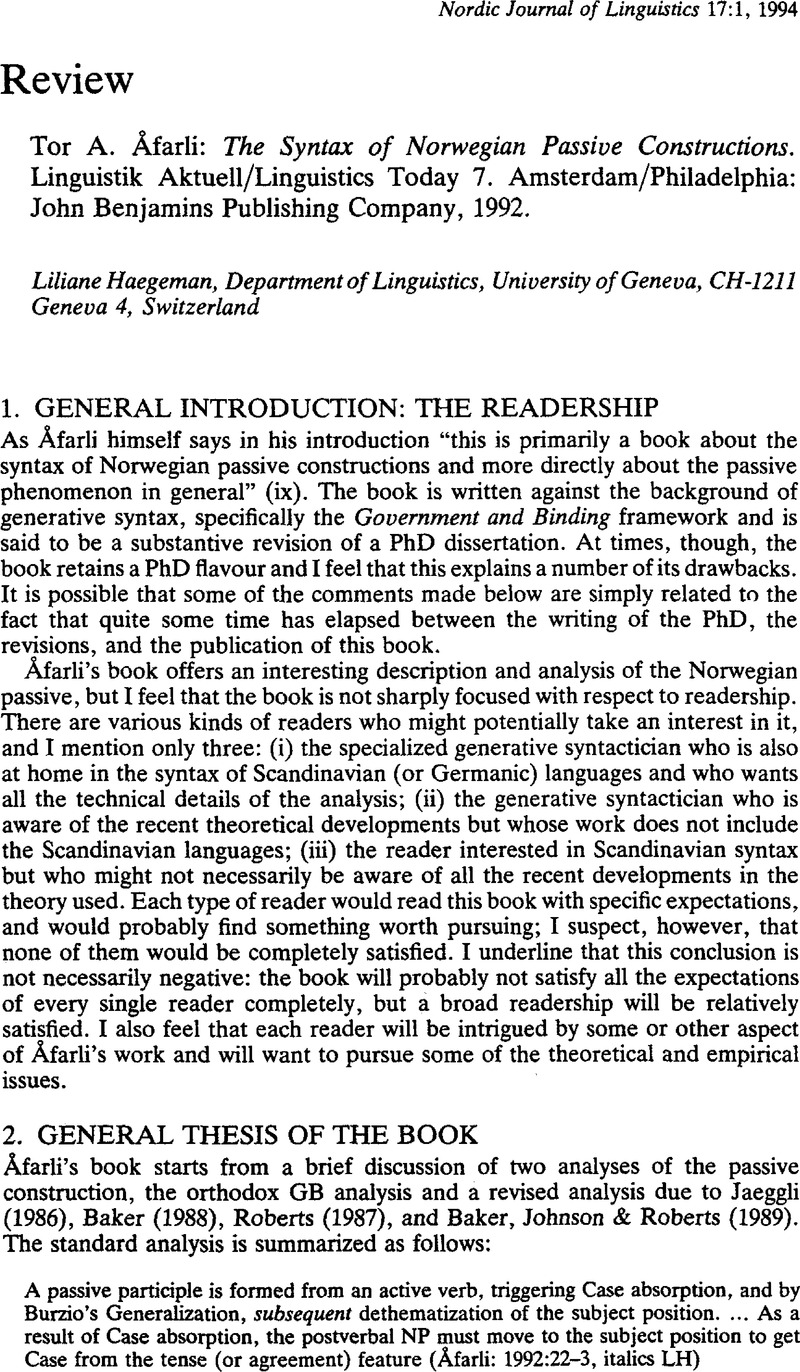Article contents
Tor A. Åfarli: The Syntax of Norwegian Passive Constructions. Linguistik Aktuell/Linguistics Today 7. Amsterdam/Philadelphia: John Benjamins Publishing Company, 1992.
Published online by Cambridge University Press: 22 December 2008
Abstract

- Type
- Review
- Information
- Copyright
- Copyright © Cambridge University Press 1994
References
REFERENCES
- 1
- Cited by




